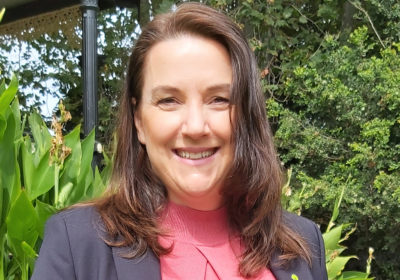
- Author: Skipp Williamson
- Posted: May 31, 2022
Five tips for CFOs on decarbonisation
With an increasing focus on clean energy transition, businesses are more than ever looking for ways to protect the environment by reducing their carbon footprint. In this article, Skipp Williamson, Managing Director of global management consulting firm Partners in Performance, shares five considerations for CFOs on their journey to decarbonisation.
Decarbonisation is often perceived as an expensive undertaking that may benefit the environment, but little else when it comes to a business’ interest. Skipp Williamson explains this is no longer the case: “The good news is that the technology and energy alternatives now exist to make significant real emissions reductions not only achievable across industries, but also NPV positive. ”
As the value focus broadens for CFOs, they must take a more strategic, future-focused view of clean energy transition.
“There are financially viable ways to reduce carbon impact, and organisations that can assist. Partners in Performance, for example, works with companies to identify concepts, assess feasibility, prioritise, fund and implement changes to benefit the business and the environment in tandem. ”
From that perspective, there are five key considerations for CFOs embarking on this journey.
“The first 30 to 50 per cent of your decarbonisation journey should be net present value (NPV) positive,” said Skipp. If you aren’t getting this, the first place I’d look is how they are framing the problem – not ‘assess a solar farm to power this process plant’ but ‘what combination of energy sources combine best to give me 24×7 power’. The first is bound to be uneconomic in many cases – the second can open up many strong solutions. .”
Larger companies that source their energy through Power Purchase Agreements (PPAs) should question whether that really is the most financially effective option, according to Skipp. Traditionally PPAs for large users would typically be giving away some 30-40% of value and large users can do significantly better by pulling together arrangements themselves with a little bit of expert help.
“If large lengths of transmission are involved, companies should be asking, ‘Why wheel through the grid?’. Energy sources that are on site or close by are typically cheaper and more likely to have uninterrupted access than those far away.”
“A decarbonisation roadmap with a dot point saying ‘renewable electricity will save2 Mtpa of CO2 a year’ is not a plan in itself,” explains Skipp. “Instead, a concrete plan would sound more like ‘eight wind turbines will be placed in these specific locations, where the land is already disturbed, and they will be roughly 150m high with 90-100mm blades’. Without this specificity, an organisation cannot rapidly progress and/or the illusion of having a plan delays them by a year or two.
Skipp says companies can typically follow three steps in terms of focus within their plan:
- Convert to renewable electricity (such as virtual power plants)
- Electrify everything else
- Drive energy efficiency (noting this is typically a much smaller lever)
“Once the plan is agreed, organisations should work to implement it as quickly as possible.”
The World Economic Forum defines green finance as “any structured financial activity that’s been created to ensure a better environmental outcome”.
Typically, green funding applies to projects that deliver material emissions reduction, including, renewable energy, energy efficiency and sustainable use of natural resources. One of the primary benefits of green funding is expected returns up to 60% lower than what corporate investors seek.
Partners in Performance have successfully developed energy services agreements that enable projects to be green funded. A key to the commercial structure is the allocation of major risks to the natural owner, who can price them effectively and therefore manage the required mitigants. The energy services agreement is predominantly a transparent and easily understood fixed annual services charge, enabling the green funders to apply their lower expected returns.
For most organisations, an automatic response is to assign the decarbonisation projects to the capital team. However, while the capital value may be large, these are typically commercial arrangements with specialist suppliers. As such, this should be managed by an agile, commercial team who pull on access to people in approvals, stakeholder management and capital design ‘as needed’.
“Given the uncertainty attached to major capital projects, in terms of geophysics, technologies and unmapped underground utilities, issues are resolved through a steady set of steps that logically manage and mitigate such risks and uncertainties,” said Skipp.
“Conversely, renewable energy projects are typically very different in the nature of their risks. Most rely on known technologies, are NPV positive, have a limited design and live within a rapidly changing approvals landscape. Risk management of such projects is thus fundamentally different from typical capital projects.
“These are among the reasons why companies should form a small, agile team separate from the existing major projects team that can move at pace, actively solve issues as they arise, scale up and down as needed, and run processes in parallel, especially from a commercial perspective,” said Skipp.
“Once the right agile team is in place, push your team to systematically accelerate these projects, de-risk the supply chain and pull costs out. The later you are to these projects, the greater the backlogs and price increases,” said Skipp.
“A design that considers supply chains, approval and external approvals, spatial and on-site labour requirements will enable an accelerated delivery. Partners in Performance has used technologies like ‘modular solar’ that reduce installation times by up to 60%, compared to tracked panels, and which need 70-80% fewer people to install. This factor is a key consideration in a tight labour market.
“Once the critical path has been articulated, your team needs to work in a collaborative partnership with the original equipment manufacturers (OEM) and contractors to compress it. “Organisations should then look forward, systematically planning several years in advance to identify potential shortages and address possible roadblocks.”
‘It takes a village to decarbonise’
Partners in Performance’s CFO, John Crosswell, says decarbonisation is a ‘hot button’ in the workplace, and something that shouldn’t be addressed in isolation.
“You need to manage office power plans and offset the impact of staff travel, but don’t let it remain invisible,” Mr Crosswell advises.
“Let your employees know what you’ve done! If it takes a village to raise a child, it takes a company to truly decarbonise. Embark on the journey as one – update your staff, your clients and other stakeholders on progress.”

About the Author
Skipp Williamson has over 30 years’ experience assisting companies to unleash their potential. She has worked in Australasia, Africa, Europe and North and Latin America, spanning mining and most metals and minerals processing. She worked for five years on strategy and performance at McKinsey and then formed Partners in Performance International in 1996. Her work has spanned volume, safety, costs, procurement, logistics, contractor management, maintenance, and capital.
Find out more at www.pip.global







